What kind of birds can you see in Lanzarote? Are the birds found in Arrecife and Timanfaya different from each other? How many species nest in our Biosphere Reserve? What behaviour should we have while birdwatching in their natural habitat? What is the best month to see the species that nest in Lanzarote?
The answers to all of these questions can be found in the latest publication from Lanzarote’s Biosphere Reserve, “Discover Lanzarote’s Birds”, a very visual and useful infographic that describes different places of ornithological interest, with pictures of the different species that can be found in them, and a brochure to initiate yourself into birdwatching and a list of behaviour guidelines to practice this activity either on a professional or an amateur level.
This is a project by Gustavo Tejera Betancort (text and photographs), María Herrera Tello and Fañi García Cabrera (design), with illustrations by Turquesa Ediciones and María Herrera Tello (Tarro canelo).
The different areas featured in the infographic are:
- FAMARA (NPT, SPA, SAC): A geomorphologic structure with the island’s highest peak (Peñas del Chache, 671 metres). Here you will find several rupicolous bird species, like the common quail (Coturnix coturnix), the Canarian raven (Corvus corax canariensis), and the western osprey or sea hawk (Pandion haliaetus).
- EL JABLE (SPA): A semidesert ecosystem of great cultural, agrarian and biological value, formed by the accumulation of sand that is blown from the sea. This is one of the settlements with the largest amount of steppe birds in the Canary Islands, such as: the cream-coloured courser (Cursorius cursor), the Canarian houbara (Chlamydotis undulata fuerteventurae) or the east Canarian lesser short-toed lark (Alaudala rufescens polatzeki)
- LOS RISQUETES (SAC): A rocky salt marsh full of puddles of sea water. It contains halophilic vegetation. This is an important place for migratory birds and nesting sea species like the Kentish plover (Charadrius alexandrinus), the yellow-legged gull (Larus michahellis) or the little egret (Egretta garzetta).
- TIMANFAYA NATIONAL PARK (NP, SPA, SAC): A volcanic habitat that has been barely colonised by vegetation. In this National Park’s coastal strip, seabirds are the most representative species, such as: the Cory’s shearwater (Calonectris diomedea borealis), the Barbary falcon (Falco pelegrinoides) or the Bulwer’s petrel (Bulweria bulwerii).
- JANUBIO (SSI, SPA): A salt evaporation pond of great cultural, heritage and biological value. This is an important place for migratory seabirds looking for shelter to nest and lay their eggs, like the ruddy shelduck (Tadorna ferruginea), the black-winged stilt (Himantopus himantopus) or the trumpeter finch (Bucanetes githagineus amantun).
- LOS AJACHES (NM, SPA): A geomorphological structure, representative of ancient volcanic landscapes. Here, we can find birds of prey, steppe birds and seabirds in small coastal cliffs. Some of the birds are really amazing, like the Egyptian vulture (Neophron percnopterus majorensis), the Barbary partridge (Alectoris barbara) or the Canary barn owl (Tyto alba glacilirostris).
- MARINA ARRECIFE: It counts with the best coastal area for birdwatching in the Canary Islands, with migratory birds like seagulls and limicolous species. It is home to the biggest colony of western cattle egrets of the Canary Islands. Here, we can find species like the Eurasian collared dove (Streptopelia decaocto), the Spanish sparrow (Passer hispaniolensis) or the western cattle egret (Bulbulcus ibis).
- LA GERIA (PL, SPA): A unique landscape of great beauty and geomorphological and anthropological interest, where vineyards and fruit trees are grown. Here we can find communities of passerine birds, like the common linnet (Linaria cannabina harterti), the Eurasian hoopoe (Upupa epops) or the Berthelot’s pipit (Anthus berthelotii).
- BARRANCO DE TENEGÜIME (PL): A geomorphological structure of great heritage value. Small birds and birds of prey fly among the old fruit trees planted here thanks to their unique water harvesting system, known as gavias and nateros. Here we can find plain swifts (Apus unicolor), the African blue tit (Cyanistes teneriffae degener) and the common kestrel (Falco tinnunculus dacotiae) among others.
- LLANOS Y MARETAS (SPA Llanos La Corona and Llanos de La Mareta): Rocky plains with an arid atmosphere and scarce vegetation where we can find plenty of steppe birds like the Eurasian stone curlew (Burhinus oedicnemus insularum), the southern grey shrike (Lanius meridionalis koenegi) or the spectacled warbler (Sylvia conspicillata).
- CHINIJO ARCHIPELAGO (NTP, SPA): Isles located north of Lanzarote, some of them uninhabited, in which colonies of some of the most important seabirds of the Canary Islands can be found. Here we can also find some rupiculous and steppe birds, like the white-faced storm petrel (Pelagodroma marina), the Eleonora’s falcon (Falco eleonorae) and the European storm petrel (Hydrobates pelagicus).
- NM: Natural Monument
- NP: National Park
- NTP: Natural Park
- PL: Protected Landscape
- SSI: Site of Scientific Interest
- SAC: Special Area of Conservation
- SPA: Special Protection Area
This user-friendly document contains a sheet, similar to fieldnotes, that you can use to start writing down the species you have seen, the place they were found at, their number, and more. You will also find a list of behaviour guidelines to practice birdwatching, fun facts and an interesting annual calendar to know when some of the species nest and information about the birds featured in the Red Book of Birds in Spain or the Spanish Catalogue of Endangered Species.
This is a useful tool for anyone who is interested in initiating themselves in this sustainable activity and for anyone who loves nature and birds.
If you want a physical copy of this infographic
come by Lanzarote’s BR Office and ask for one!
For more information:
Ornithological tourism in Lanzarote.
Practice birdwatching in Lanzarote with the ompanies authorised by Lanzarote’s Biosphere Reserve Office..
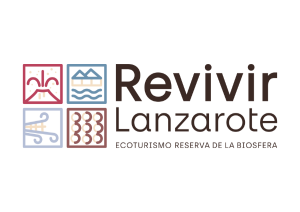
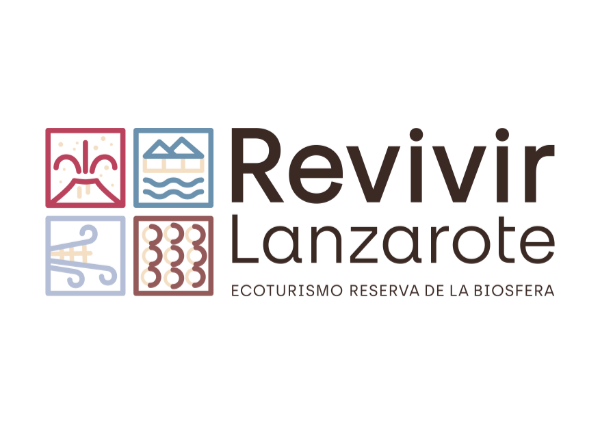




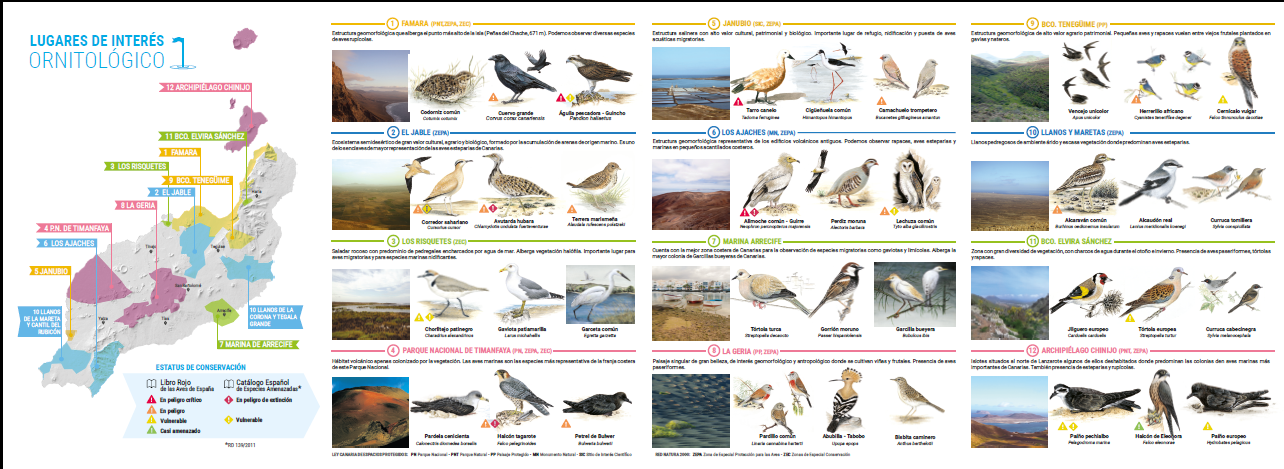
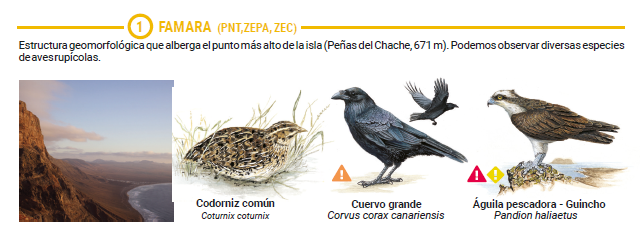
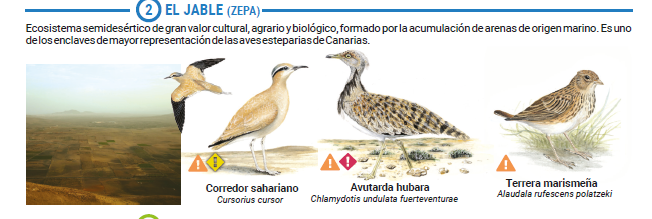
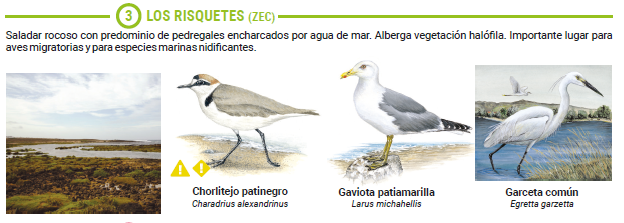

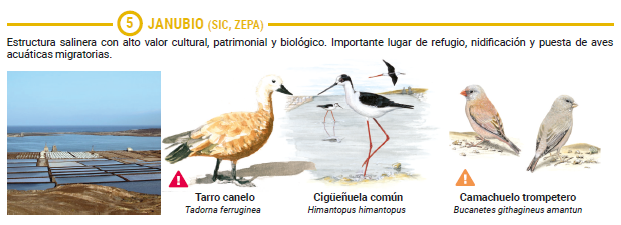
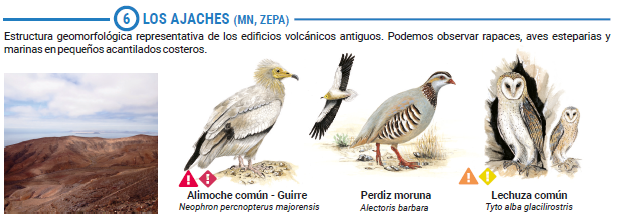
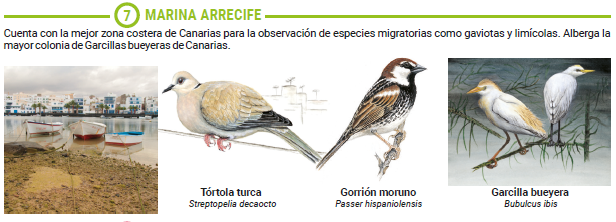
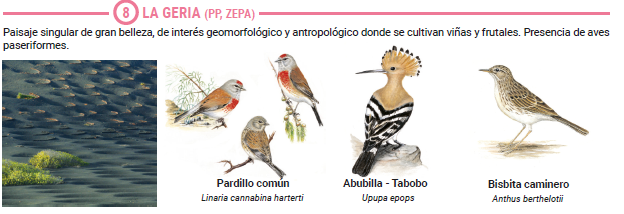
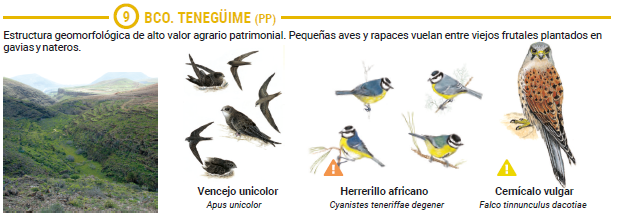
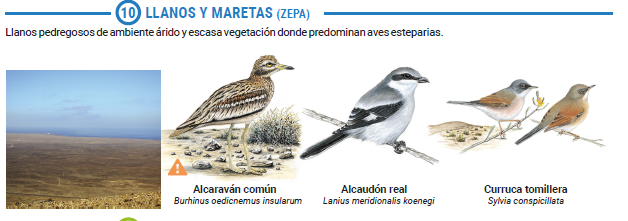
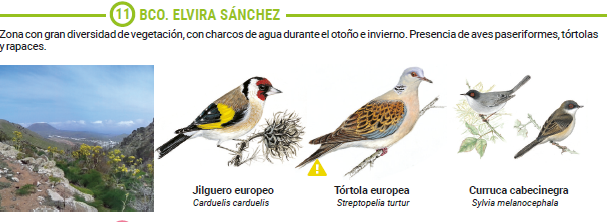
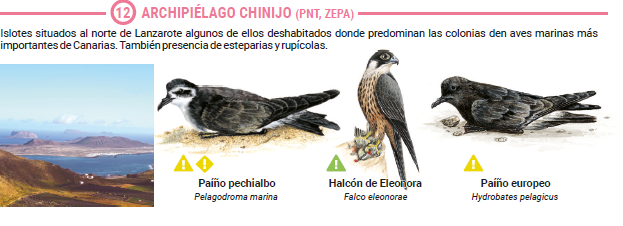
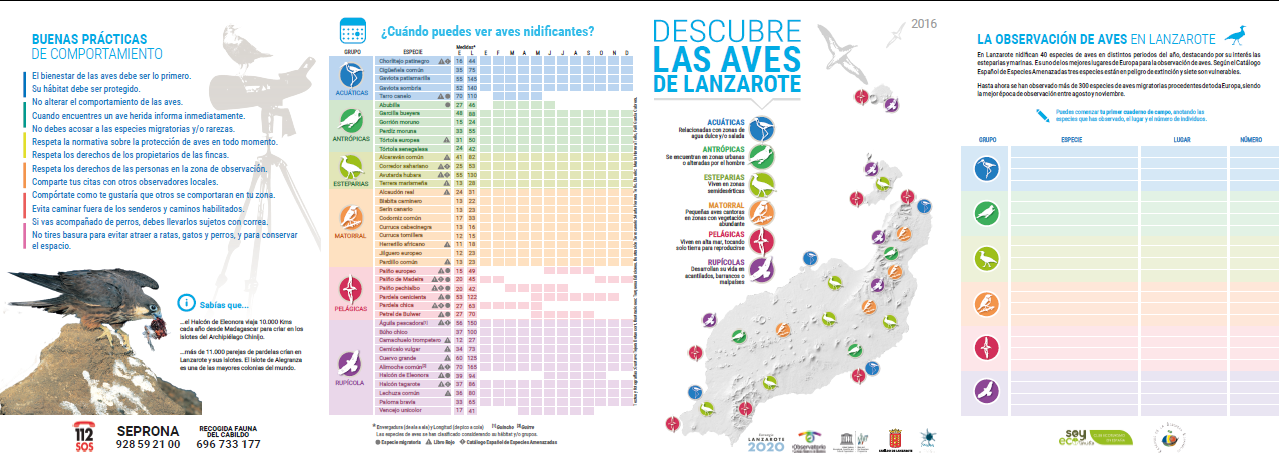

2 Response Comments
Muy buena página web, este verano veré si es cierta toda esta información visitando estos bonitos lugares, seguro que sí, un saludo y gracias
Buenos días, perdón por no contestar antes !! cosas del directo. GRACIAS enormes por sus palabras y aquí le esperamos, feliz día